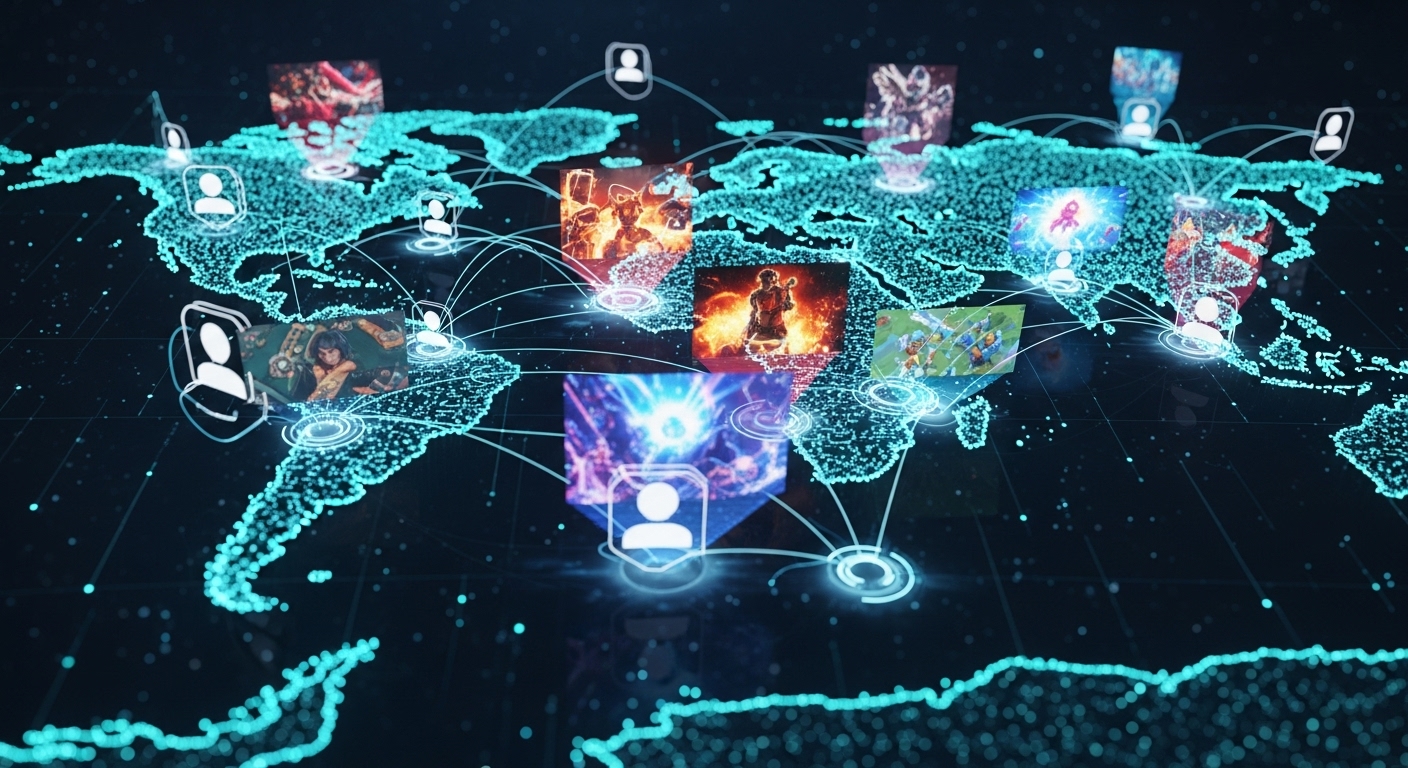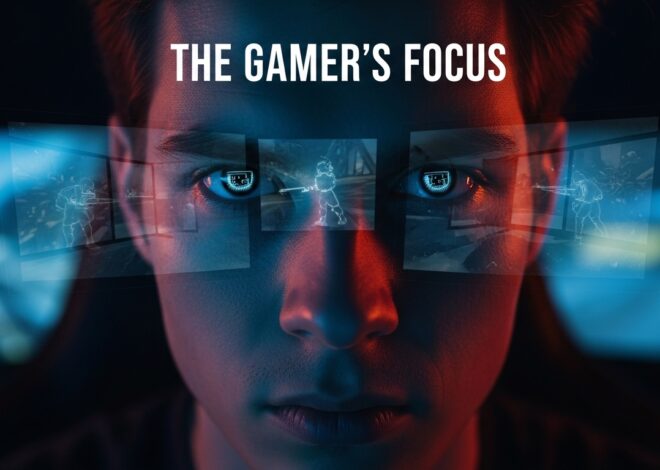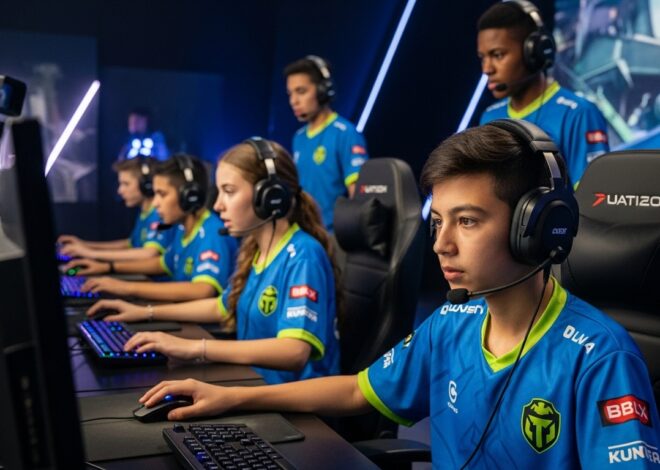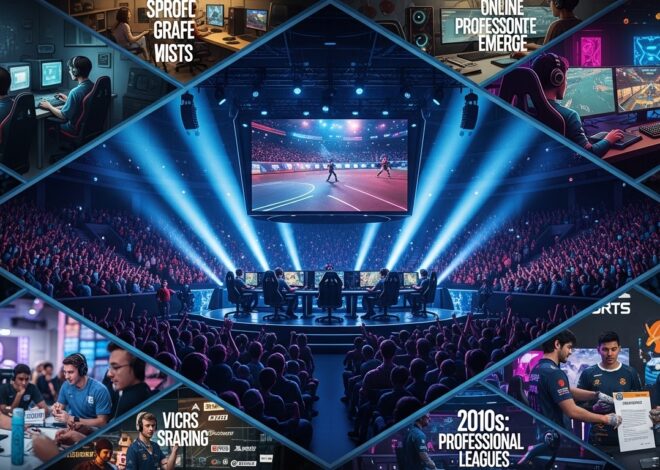
The Rise and Evolution of Esports: From Niche Hobby to Global Phenomenon
Introduction
There was a time when video games were dismissed as a pastime for kids or a lazy weekend activity for a few enthusiasts. Fast forward to today, and gaming has grown into one of the largest entertainment industries in the world. But within that vast landscape, one branch has exploded beyond imagination—Esports. What was once a hobby shared among friends in small LAN cafes is now a global spectacle, complete with million-dollar tournaments, professional players, massive audiences, and even college scholarships. Esports has become a legitimate career path and a cultural movement, reshaping how we define sports, competition, and entertainment.
In this post, we’ll dive deep into the story of Esports—how it started, how it grew, and what makes it such a fascinating, fast-moving force. We’ll explore its roots, its heroes, the business behind it, and its undeniable impact on society and the future of digital entertainment.
The Origins of Esports
The term “Esports” might sound new, but competitive gaming has existed for decades. The earliest recorded gaming competition dates back to 1972 at Stanford University, where students played the game “Spacewar.” The prize? A year’s subscription to Rolling Stone magazine. It was humble, but it was a start.
Through the 1980s and 1990s, video game competitions began to surface sporadically. Arcade machines were the first battlegrounds, where players fought for the highest score in titles like Pac-Man or Donkey Kong. As home consoles and personal computers became more popular, so did organized gaming events.
However, the real turning point came with the rise of online multiplayer gaming. When the internet connected players across the world, the nature of competition changed forever. Games like Quake, StarCraft, and Counter-Strike opened the door to a new kind of community—one built around skill, teamwork, and global rivalries.
The 2000s: The Birth of Modern Esports
By the early 2000s, gaming had moved firmly into the mainstream, and the foundation for modern Esports began to form. South Korea became the epicenter of this evolution. With high-speed internet access, PC bangs (gaming cafes), and government support, competitive gaming became a national craze.
Televised matches of StarCraft drew millions of viewers. Players like Lim “BoxeR” Yo-hwan became celebrities, inspiring a generation of professional gamers. South Korea proved that gaming could be more than fun—it could be a career, a passion, and a legitimate sport.
Around the same time, Western audiences began catching on. Competitive Counter-Strike, Halo, and Warcraft III tournaments started drawing crowds. LAN events like the World Cyber Games and Major League Gaming (MLG) gave structure to this growing industry, offering sponsorships, rankings, and serious prize pools.
Streaming and the Explosion of Esports
If the 2000s built the stage, the 2010s brought the lights, cameras, and the crowd. The rise of platforms like Twitch and YouTube Gaming transformed Esports from a niche activity to a global spectacle.
Before live streaming, watching someone else play video games wasn’t common. Now, millions of people tune in daily to watch tournaments, practice sessions, and even casual playthroughs. Streamers became celebrities in their own right, blending entertainment with competition.
Games like League of Legends, Dota 2, and Overwatch ushered in a new era. Their tournaments filled arenas once reserved for traditional sports. The League of Legends World Championship, for instance, drew more viewers than the NBA Finals or the Super Bowl in certain years. The International, Dota 2’s annual championship, began offering prize pools exceeding 30 million dollars—an amount unheard of in the early days of gaming.
Streaming also gave fans access to their favorite players, building an emotional connection that sports audiences had long enjoyed. Esports was no longer just about winning—it was about storytelling, personalities, and community.
The Business Behind Esports
As Esports gained momentum, businesses took notice. Today, the industry is a multibillion-dollar ecosystem involving game developers, tournament organizers, sponsors, media companies, and tech giants.
Game publishers like Riot Games, Blizzard Entertainment, and Valve became central players. Unlike traditional sports, where independent organizations govern the games, in Esports, the creators of the games themselves often control the competitions. This gives them immense influence over the structure, rules, and even economics of the sport.
Sponsorships became a key source of revenue. Brands from energy drinks to car manufacturers began investing heavily. Major companies like Coca-Cola, Red Bull, Intel, and Nike sponsor teams and events, recognizing the value of reaching the coveted young, digital-native audience.
Then came franchised leagues—modeled after traditional sports systems. Titles like Overwatch League and Call of Duty League introduced city-based teams with owners, investors, and players under contract. This move professionalized Esports further, creating stability and long-term business opportunities.
The Life of a Professional Gamer
Behind the glamour of packed arenas and cheering fans lies a demanding lifestyle. Professional Esports players dedicate countless hours to practice, often training 10 to 12 hours a day. They analyze opponents, study strategies, and maintain peak mental and physical condition.
Most players start young, often in their teens, and reach peak performance in their early twenties. The pressure is intense. They face strict schedules, public scrutiny, and the constant need to perform at their best. Mental fatigue, burnout, and injuries such as wrist strain are common challenges.
However, those who succeed reap great rewards. Top-tier players earn significant salaries, sponsorship deals, and tournament winnings. Some transition into streaming or coaching careers after retirement. Others build their personal brands and stay connected to the community that made them famous.
Teams also provide structure and support. Just like in traditional sports, they employ coaches, analysts, managers, and physical trainers. The goal is to create an environment where players can perform consistently while maintaining their well-being.
Esports as a Cultural Force
Esports has grown far beyond competition—it’s now a cultural force. It influences fashion, music, education, and even the way people socialize.
Major music artists perform at Esports events. Virtual concerts, in-game collaborations, and soundtracks blur the lines between entertainment forms. Fashion brands release limited-edition jerseys and streetwear collections inspired by gaming teams.
Colleges and universities now offer Esports scholarships, recognizing the skill and dedication it takes to compete at a high level. Entire academic programs focus on Esports management, broadcasting, and game design, preparing the next generation for careers in the industry.
Even governments have begun to recognize Esports officially. Countries like South Korea, China, and the United States have issued athlete visas to professional players, treating them like traditional sports professionals.
The Global Reach of Esports
One of the most remarkable aspects of Esports is its global nature. Unlike traditional sports bound by geography or physical facilities, Esports thrives on accessibility. All you need is a computer, console, or even a mobile phone—and an internet connection.
This accessibility has allowed Esports to flourish in places far beyond the usual centers of sports power. Southeast Asia, for example, has become a booming Esports region, with mobile titles like Mobile Legends and PUBG Mobile dominating the scene.
In China, massive tournaments draw millions of fans. In North America and Europe, competitive gaming is integrated into mainstream culture. Even in Africa and the Middle East, local Esports communities are rapidly emerging, supported by new infrastructure and investment.
Diversity and Inclusion in Esports
While Esports has made great strides, it still faces challenges related to diversity and inclusion. The industry has historically been male-dominated, with women and marginalized groups often underrepresented or facing harassment.
However, the tide is turning. Female players, casters, and team owners are carving out their place in the industry. Organizations and game developers are taking stronger stances against toxic behavior and promoting inclusivity. Mixed-gender tournaments, diversity initiatives, and all-female leagues are growing in popularity.
Representation matters, and Esports is beginning to reflect that. As the audience becomes more global and diverse, so too does the face of competition.
The Role of Technology in Esports
Technology is the lifeblood of Esports. Without high-speed internet, powerful hardware, and sophisticated software, the entire industry would collapse. But beyond the basics, innovation continues to shape the future of competitive gaming.
Virtual reality (VR) and augmented reality (AR) promise new dimensions of competition. Artificial intelligence is being used for strategy analysis, matchmaking, and anti-cheat systems. Cloud gaming may soon make Esports accessible to anyone, anywhere, regardless of device power.
Even broadcast technology has evolved. Spectator modes, instant replays, and dynamic camera systems create cinematic experiences for fans. Some events even use holographic projections and 3D effects to blend the physical and digital worlds.
Esports has become not only a product of technology but also a driver of it.
The Economics of Esports
The financial growth of Esports is staggering. Industry revenues have climbed into the billions, fueled by sponsorships, media rights, merchandise, and ticket sales. But one of the most promising areas is digital monetization—selling in-game cosmetics, battle passes, and virtual goods tied to Esports events.
Game publishers are finding creative ways to integrate Esports directly into their games. For instance, fans can support their favorite teams by purchasing themed items, with a portion of the revenue going back to the players and organizations. This creates a self-sustaining ecosystem where fans, players, and developers all benefit.
Moreover, the rise of Esports betting and fantasy leagues adds another layer to the business, although these bring regulatory challenges. Investors see Esports as the future of youth entertainment—a blend of interactivity, community, and global reach.
Challenges and Controversies
Despite its success, Esports faces real challenges. One of the biggest is sustainability. Prize money and viewership might be huge for top games, but many titles struggle to maintain long-term competitive scenes.
Player burnout and mental health are also major concerns. The intense pressure to perform, combined with online criticism and long practice hours, takes a toll. Organizations are now investing in psychological support and rest periods to prevent breakdowns.
Another issue is regulation. Because each game publisher controls its own Esport, there’s no unified governing body like FIFA or the IOC. This can lead to inconsistent rules, contract disputes, and difficulty ensuring fairness across regions.
And, as with any digital platform, cheating and match-fixing remain persistent threats. Advanced anti-cheat systems and stricter enforcement are helping, but the battle is ongoing.
Esports and Traditional Sports
The relationship between Esports and traditional sports is evolving rapidly. Once dismissed as “not real sports,” Esports has now gained recognition from major athletic organizations. The International Olympic Committee has explored integrating Esports events, and several countries now include them in their national sports programs.
Traditional sports teams are also investing heavily. Football clubs like Paris Saint-Germain, Manchester City, and FC Barcelona have Esports divisions. The NBA and NFL have partnered with gaming leagues to create virtual counterparts to their real-world competitions.
This crossover benefits both sides. Esports gains legitimacy and resources, while traditional sports gain access to younger, more tech-savvy audiences.
The Future of Esports
Looking ahead, Esports is poised for even greater growth. Advances in technology, expanding audiences, and mainstream recognition are setting the stage for an era where digital competition stands alongside traditional athletics as an equal.
Mobile Esports, in particular, will continue to explode, especially in developing regions where smartphones are more common than gaming PCs. Virtual reality competitions could offer entirely new forms of physical-digital interaction.
Education will also play a role. As Esports programs enter schools, the industry will produce more trained professionals—not just players, but also coaches, broadcasters, marketers, and analysts.
In the long term, Esports could become a unifying force across borders, generations, and cultures. It embodies the spirit of competition, innovation, and connection in a world that’s increasingly digital.
Conclusion
From humble beginnings in college basements and arcades to packed arenas and global broadcasts, Esports has traveled an incredible journey. It’s a story of passion, technology, and the human desire to compete and connect.
Esports is more than just playing games. It’s about community, creativity, and the blending of entertainment, skill, and technology in ways no other medium can match. Whether you’re a player, a fan, or simply a curious observer, there’s no denying the energy and excitement that Esports brings to the modern world.
As the boundaries between the physical and digital continue to blur, Esports stands as a symbol of what’s possible when imagination meets ambition. The game has only just begun.


